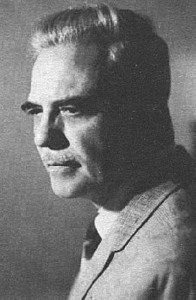
The Miltonmodel is the model in NLP for influencing people. It is named after Milton Erickson, the famous psychiatrist who thought up hypnotherapy. It was named after him because no-one has so many publication where it clearly states that one shouldn’t manipulate other people while at the same time he manipulated so many people. The Miltonmodel consists of the reversed metamodel, indirect elicitation patterns, metaphor and ambiguities.
That in the ‘process of the whole’ the work of mankind is of no account, because there is no total process (conceived of as a system -) at all: – that there is no ‘whole’, that no evaluation of human existence, of human goals can be made with a view to something which doesn’t exist … – that necessity, causality, purposiveness are useful illusions – that the goal is not the increase of consciousness but the enhancement of power, an enhancement in which the usefulness of consciousness is included, with pleasure as much as with unpleasure – that one does not take means as the highest measure of value (thus not states of consciousness, such as pleasure and pain, if consciousness is itself a means -) – that the world is not at all an organism, but chaos: that the development of ‘mental life’ is a means for the organisation to gain relative permanence … – that all ‘desirability’ is meaningless with respect to the total character of being.
Notebook 11, November 1887 – March 1888 paragraph 74
Not enough! – It is not enough to prove something, one has also to seduce or elevate people to it. That is why the man of knowledge should learn how to sounds like folly!
Daybreak paragraph 330
The difference between the metamodel and the Miltonmodel
In the quote below, if you replace “science” with the metamodel and realize that the conjurer is the hypnotist using the Miltonmodel, you get a very good explanation of the difference between the Miltonmodel and the metamodel.
The conjurer and his opposite. – What is astonishing in the realm of science is the opposite of what is astonishing in the art of the conjurer. For the latter wants to persuade us to see a very simple causality where in truth a very complicated causality is at work. Science, on the contrary, compels us to abandon belief in simple causalities precisely where everything seems so easy to comprehend and we are the fools of appearance. The ‘simplest’ things are very complicated – a fact at which one can never cease to marvel!
Daybreak paragraph 6
To be Profound and to Appear Profound. — He who knows that he is profound strives for clarification; he who would like to appear profound to the multitude strives for obscurity. The multitude thinks everything profound of which it cannot see the bottom; it is so timid and goes so unwillingly into the water.
Gay Science paragraph 173
More seriously. – One takes an obscure and inexplicable thing more seriously than a clear and explicable one.
Human, All Too Human, part 1, paragraph 532